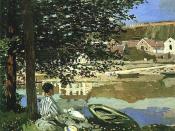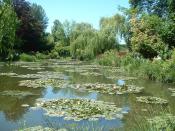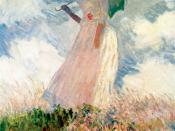Little did Eugène Boudoin know that when he first encouraged Monet to paint out of doors in 1858, it would lead to a revolution in the history of art for the entire world. Arguably the founder of Impressionism, Claude Monet took Boudoin's advice, slowly building the ideas and foundations for the Impressionist movement; he proceeded to paint the world around him in a completely new perspective, one of deep expression, unfiltered emotion, and immediate sensation. After a lifetime of travels, wars, and social experiences, Monet finally settled in Giverny, where he was able to reflect both emotionally and thematically on his work and come to terms with many of the issues that troubled him during the 1870's and 80's about industrialization, progress, and his relationship with nature and with society. His home in Giverny became his quiet retreat from the stresses of the external world, where the time passed easily and he could let his imagination have control over the whole domain.
His last work before he began his concentration on the water lilies, Monet's Garden at Giverny, represents the evolution and culmination of both his physical and mental journey as a painter through the nineteenth century. Possessing elements from every era of his career, this painting marks an end to a chapter in Monet's life that was full of contrast, and it demonstrates where he has come from, all that he has seen, and what has lead him to this utopia in the French countryside.
After close observation, the many layers to the composition of Monet's Garden at Giverny begin to unfold, the nuances revealing themselves through the simple organizational structure and unique style in which he painted the work. Initially, it seems as though the scene depicts a simple but pleasant summer day in a garden of...


